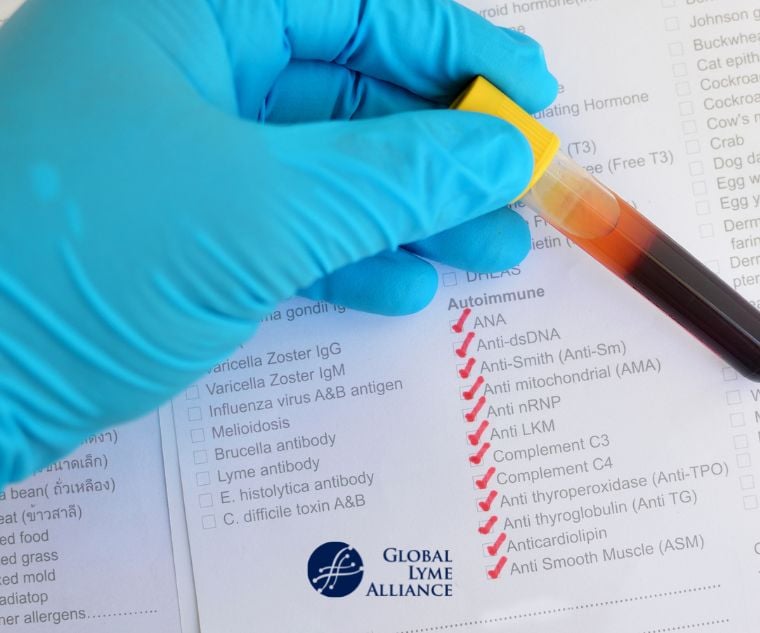
Lyme Disease Versus Autoimmune Disease
There is a lot of debate around whether or not Lyme disease, which affects more than 476,000 people in the United States each year, is an autoimmune disease. While the bacterial infection can have similar symptoms as autoimmune disorders and can weaken your immune system as those disorders do, there are some key differences between the two types of diseases.
How are Lyme Disease Autoimmune Disease Different?
Autoimmune disease occurs when the body mistakenly attacks its own healthy cells. Lyme disease (Lyme borreliosis) is a systemic bacterial infection caused by Borrelia burgdorferi, the Lyme disease bacteria that is transmitted through a black-legged tick bite.
Lyme disease affect all parts of the body, from the joints to the heart to the central nervous system. Although this infectious disease is not typically categorized as an autoimmune disorder because it is bacteria-driven, there are some manifestations of Lyme disease, like Lyme arthritis and possibly neuroborreliosis (when Lyme crosses the blood-brain barrier and enters the nervous system, causing symptoms like brain fog) that are autoimmune in origin. People can have a genetic predisposition to autoimmune responses, whereas environmental factors—spending time in tick-endemic areas like woods, tall grasses, shrubs, brush, leaf litter, and beach dunes, and stone walls—put people at greatest risk for contracting Lyme disease.
What Are Examples of Autoimmune Diseases?
- Multiple Sclerosis
- Lupus
- Inflammatory bowel disease
- Celiac Disease
- Rheumatoid Arthritis
- Sjogren’s Syndrome
- Autoimmune pancreatitis
- Hashimoto’s disease (affecting the thyroid gland)
- Ulcerative colitis
Similarities of Lyme Disease and Autoimmune Disease
Though Lyme disease and autoimmune disease have different origins, they can both affect your immune system. Both attack healthy cells, impacting immune response. Additionally, symptoms of Lyme disease can mimic symptoms of autoimmune diseases. Autoimmune diseases that can have similar symptoms to Lyme disease include:
- Multilpe sclerosis
- Sjogren’s Syndrome
- Dermatomyositis
- Rheumatoid arthritis
- Psoriatic arthritis
- Spondyloarthritis
Does Lyme Disease Weaken Your Immune System?
Yes. As with any infectious disease, as soon as you are infected, your body’s immune system reacts. If you are bitten by a black-legged tick that transmits Borrelia burgdorferi, the bacteria that causes Lyme disease, your body sends out the first wave of immune responses to kill the bacteria. Immune responses can include inflammation, which can cause flu-like symptoms or joint pain (a different symptom from Lyme arthritis, which happens when the Lyme bacteria moves into the joints). For some bacteria, the first wave of immune response works, and antibiotic treatment helps kill the infection. If Lyme is not treated, however—or even in 10-20% of cases when it is—the consequences of bacterial infection can persist, and the immune response including inflammation continues to cause collateral damage. Some people experience chronic Lyme disease with persistent symptoms. By continually fighting Lyme disease (as well as any other tick-borne illnesses you may have), your immune system weakens over time, making it less able to fight off acute infections.
Lyme Disease Diagnosis and Why it is Important
Lyme disease is considered the “great imitator” because its symptoms mimic those of many other illnesses, including some autoimmune conditions. Lyme disease is often mistaken for other health conditions like immune system disorders or chronic illness like multiple sclerosis (or sometimes patients have both Lyme and multiple sclerosis) or chronic fatigue syndrome.
The overlap in symptoms is not the only reason Lyme is difficult to diagnosis. Because they only look for antibodies against Borrelia burgdorferi, not the bacteria itself, Lyme disease tests can return a lot of false negative results. This means some people who have Lyme disease are told they don’t have it because they test negative. What many people don’t know is that Lyme is actually a clinical diagnosis. This means that a doctor should diagnose Lyme disease based on a person’s symptoms as well as their exposure to ticks. Blood tests can corroborate a doctor’s diagnosis but shouldn’t be used alone to determine if someone has Lyme.
Though symptoms of Lyme can be similar to other illnesses, there are some important differences that doctors can look for when making a differential diagnosis. For example, Lyme arthritis tends to be migratory, moving to different parts of the body on different days, and is often asymmetrical; a patient might feel pain and inflammation in one knee but not the other. On the other hand, rheumatoid arthritis pain tends to be symmetrical. Another example is systemic lupus erythematosus, which can cause widespread inflammation and subsequent rashes. Those rashes can be mistaken for the erythema migrans rash of Lyme disease, which often has a bulls-eye shape. While a patient can have multiple erythema migrans rashes, if they do get one at all, it’s usually at the site of a tick bite. Knowing a patient’s risk for tick exposure can help a doctor make a differential diagnosis.
Early diagnosis of Lyme disease is important. If Lyme is caught and treated with conventional medicine (antibiotics) early, you are more likely to eliminate the infection and the symptoms. If Lyme is misdiagnosed and not treated, the Lyme bacteria can move to other parts of the body, causing late-stage infection, including neurological and chronic Lyme.
How Can You Prevent Lyme Disease?
The best way to avoid getting Lyme disease is to Be Tick AWARE:
- Avoid high traffic areas where ticks live (wooded areas, leaf litter, tall grass, beach grass, bushy areas, stone walls, and perimeters where the lawn meets the woods).
- Wear light-colored clothing to spot ticks more easily: long-sleeved shirt tucked in at the waist, long pants tucked into high socks, close-toed shoes, and a hat with your hair tucked in. Do not walk in the grass barefoot or in open sandals, even if it’s cut short.
- Apply EPA-approved tick repellent (such as DEET or picaridin) to skin and insecticide (such as permethrin) to clothing, shoes and gear, as directed.
- Remove clothes upon entering the home; toss in the dryer at high temperature for 10-15 minutes to kill live deer ticks. Washing clothes will not kill ticks; they need to be exposed to high heat.
- Examine yourself and your pets for ticks daily. Feel for bumps, paying close attention to the backs of knees, the groin, the armpits, in and behind the ears, the bellybutton, and the scalp. Check everywhere—ticks love to hide! Shower or bathe as soon as possible to wash away unattached ticks. If you find a tick, remove it quickly! The longer it is attached, the more likely it will transmit a disease.
The above material is provided for information purposes only. The material (a) is not nor should be considered, or used as a substitute for, medical advice, diagnosis, or treatment, nor (b) does it necessarily represent endorsement by or an official position of Global Lyme Alliance, Inc. or any of its directors, officers, advisors or volunteers. Advice on the testing, treatment or care of an individual patient should be obtained through consultation with a physician who has examined that patient or is familiar with that patient’s medical history.








